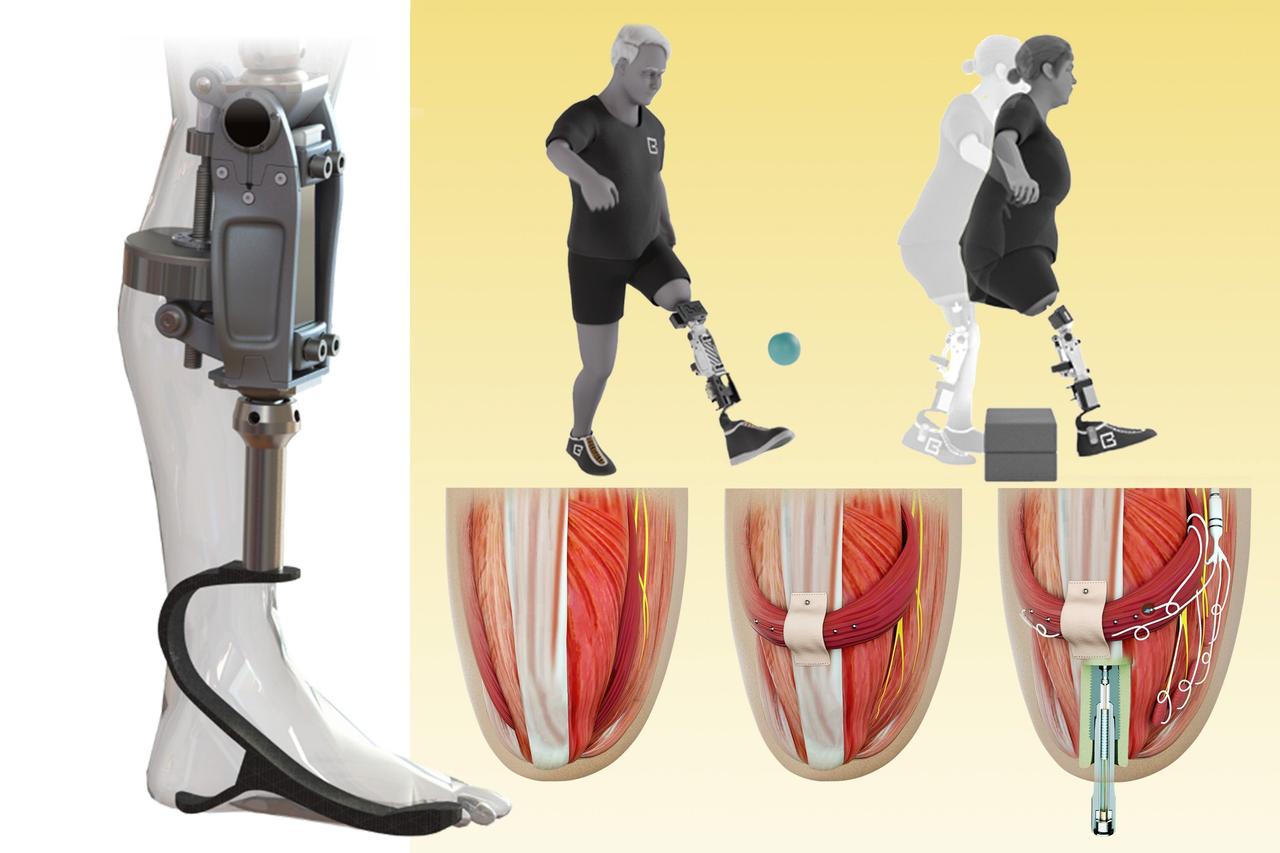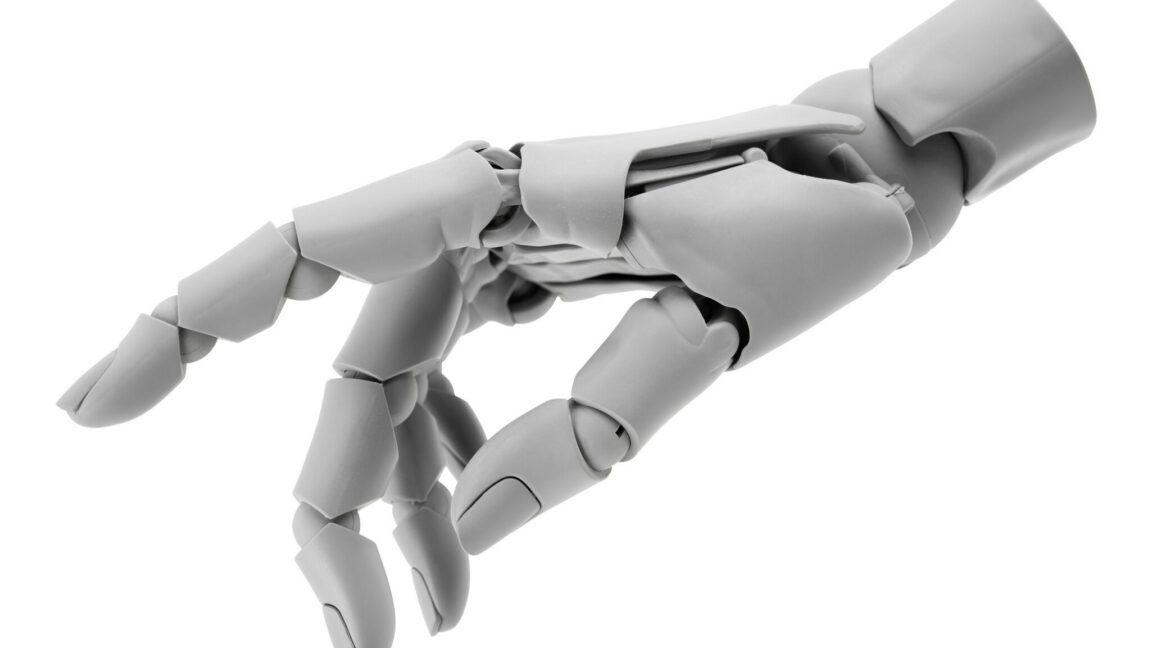Revolutionary AI-Powered Material Allows Amputees to Adjust Prosthetic Fit via Smartphone
2 Sources
2 Sources
[1]
New Material Allows Amputees To Adjust Prosthetic Limb Fit Via Smartphone
WEDNESDAY, March 26, 2025 (HealthDay News) -- Chafing, blisters and sores are common problems for people fitted with an artificial limb. The artificial limb's fixed, rigid shape can't adapt to changes in a person's body, ultimately causing it to rub against a person's residual limb. "Ultimately, no matter how sophisticated the limb itself is, if it cannot connect closely and comfortably with the human body, it becomes unwearable," researcher Firat Guder, a reader in intelligent interfaces in the Department of Bioengineering at Imperial College London, said in a news release. But a new advance aims to solve this 200-year-old problem by revolutionizing the fit of prosthetic limbs, according to a recent report in the journal Nature Communications. A patented new material called "Roliner" allows amputees to change the shape, volume and stiffness of the liner used to attach an artificial limb's socket to their body, researchers report. In fact, amputees can make these tweaks on the fly using their smartphone, creating a more comfortable fit in real time, researchers said. "Badly fitting prosthetic limbs are a constant struggle for amputees," said lead researcher Uğur Tanriverdi, co-founder of Unhindr, the wearable robotics company that produces Roliner. "They increase the risk of blisters and sores that can become infected, and the situation can become so painful that there is no choice but to go back to using a wheelchair," Tanriverdi said in a news release. "Alongside causing extreme physical pain, problems with prosthetics not fitting can also impact on a person's mental health as they are unable to live as independently and freely as they deserve." Roliner is made from elastic silicone containing channels that can be pressurized to change its volume and shape, researchers said. "Just like a basketball, it becomes bigger and more rigid when it is inflated, and smaller and softer when it is deflated," Tanriverdi said. Six amputees who used Roliner with their everyday artificial legs found it "to improve fitting and their experience to be less frustrating compared to their everyday liner," researchers reported in the journal article. Roliner also can incorporate AI so that each liner can "learn" the personal preferences of the person using it, researchers said. Driven by AI, the limb could automatically adjust its properties according to how the human body changes throughout the day, or due to hormonal fluctuations, researchers said. People also could change the fit to match the activity they're pursuing. For example, they might prefer a looser fit while sitting and a tighter fit while walking. The research team also thinks that the technology can be used in applications beyond prosthetics. For example, it could be used to increase the flexibility of exoskeletons used in rehab, modulate the pressure points of hospital beds, or improve the fit of protective gear like ski boots.
[2]
New material lets amputees adjust prosthetic fit using a smartphone
Chafing, blisters and sores are common problems for people fitted with an artificial limb. The artificial limb's fixed, rigid shape can't adapt to changes in a person's body, ultimately causing it to rub against a person's residual limb. "Ultimately, no matter how sophisticated the limb itself is, if it cannot connect closely and comfortably with the human body, it becomes unwearable," researcher Firat Guder, a reader in intelligent interfaces in the Department of Bioengineering at Imperial College London, said in a news release. But a new advance aims to solve this 200-year-old problem by revolutionizing the fit of prosthetic limbs, according to a recent report in the journal Nature Communications. A patented new material called "Roliner" allows amputees to change the shape, volume and stiffness of the liner used to attach an artificial limb's socket to their body, researchers report. In fact, amputees can make these tweaks on the fly using their smartphone, creating a more comfortable fit in real time, researchers said. "Badly fitting prosthetic limbs are a constant struggle for amputees," said lead researcher Uğur Tanriverdi, co-founder of Unhindr, the wearable robotics company that produces Roliner. "They increase the risk of blisters and sores that can become infected, and the situation can become so painful that there is no choice but to go back to using a wheelchair," Tanriverdi said in a news release. "Alongside causing extreme physical pain, problems with prosthetics not fitting can also impact on a person's mental health as they are unable to live as independently and freely as they deserve." Roliner is made from elastic silicone containing channels that can be pressurized to change its volume and shape, researchers said. "Just like a basketball, it becomes bigger and more rigid when it is inflated, and smaller and softer when it is deflated," Tanriverdi said. Six amputees who used Roliner with their everyday artificial legs found it "to improve fitting and their experience to be less frustrating compared to their everyday liner," researchers reported in the journal article. Roliner also can incorporate AI so that each liner can "learn" the personal preferences of the person using it, researchers said. Driven by AI, the limb could automatically adjust its properties according to how the human body changes throughout the day, or due to hormonal fluctuations, researchers said. People also could change the fit to match the activity they're pursuing. For example, they might prefer a looser fit while sitting and a tighter fit while walking. The research team also thinks that the technology can be used in applications beyond prosthetics. For example, it could be used to increase the flexibility of exoskeletons used in rehab, modulate the pressure points of hospital beds, or improve the fit of protective gear like ski boots. SOURCES: Imperial College London, news release, March 19, 2025; Nature Communications, March 19, 2025 Copyright © 2025 HealthDay. All rights reserved.
Share
Share
Copy Link
A new material called Roliner, incorporating AI technology, enables amputees to adjust their prosthetic limb fit using a smartphone, potentially solving a 200-year-old problem in prosthetics.
Revolutionizing Prosthetic Comfort with AI and Smartphone Technology
A groundbreaking advancement in prosthetic technology has emerged, potentially solving a 200-year-old problem faced by amputees. Researchers have developed a new material called "Roliner" that allows users to adjust the fit of their prosthetic limbs in real-time using a smartphone app, significantly improving comfort and usability
1
2
.The Challenge of Ill-Fitting Prosthetics
Prosthetic limbs have long been plagued by issues of discomfort due to their fixed, rigid shape. This inflexibility often leads to chafing, blisters, and sores as the prosthetic rubs against the wearer's residual limb. Dr. Firat Guder from Imperial College London emphasizes, "Ultimately, no matter how sophisticated the limb itself is, if it cannot connect closely and comfortably with the human body, it becomes unwearable"
1
.Introducing Roliner: A Smart Solution
Roliner, developed by the wearable robotics company Unhindr, is made from elastic silicone containing pressurized channels. This innovative design allows users to modify the shape, volume, and stiffness of the prosthetic liner. Lead researcher Uğur Tanriverdi explains, "Just like a basketball, it becomes bigger and more rigid when it is inflated, and smaller and softer when it is deflated"
1
2
.AI-Powered Personalization
What sets Roliner apart is its integration of artificial intelligence. The material can "learn" the personal preferences of each user, automatically adjusting to changes in the body throughout the day or during different activities. For instance, it can provide a looser fit while sitting and a tighter fit while walking
1
2
.Improving Quality of Life for Amputees
The impact of this technology on amputees' lives could be significant. Tanriverdi notes, "Badly fitting prosthetic limbs are a constant struggle for amputees. They increase the risk of blisters and sores that can become infected, and the situation can become so painful that there is no choice but to go back to using a wheelchair"
1
2
.Related Stories
Promising Early Results
In a study reported in Nature Communications, six amputees who tested Roliner with their everyday artificial legs found it "to improve fitting and their experience to be less frustrating compared to their everyday liner"
1
2
.Future Applications
The potential of this technology extends beyond prosthetics. Researchers envision its use in various fields, including:
- Increasing the flexibility of exoskeletons used in rehabilitation
- Modulating pressure points in hospital beds
- Improving the fit of protective gear like ski boots
1
2
As this AI-powered material continues to develop, it holds the promise of significantly enhancing the quality of life for amputees and revolutionizing the field of prosthetics.
References
Summarized by
Navi
Related Stories
Revolutionary Algorithm Transforms Robotic Prosthetics to Restore Natural Movement and Prevent Secondary Health Issues
20 Nov 2025•Health

MIT's Bionic Knee Breakthrough: Integrating Prosthetics with Human Physiology
11 Jul 2025•Science and Research

AI Co-Pilot for Bionic Hands Transforms How Amputees Control Prosthetics with Intuitive Grasping
09 Dec 2025•Health

Recent Highlights
1
Google launches Gemini 3 Flash as default AI model, delivering speed with Pro-grade reasoning
Technology

2
OpenAI launches GPT Image 1.5 as AI image generator war with Google intensifies
Technology

3
OpenAI launches ChatGPT app store, opening doors for third-party developers to build AI-powered apps
Technology





